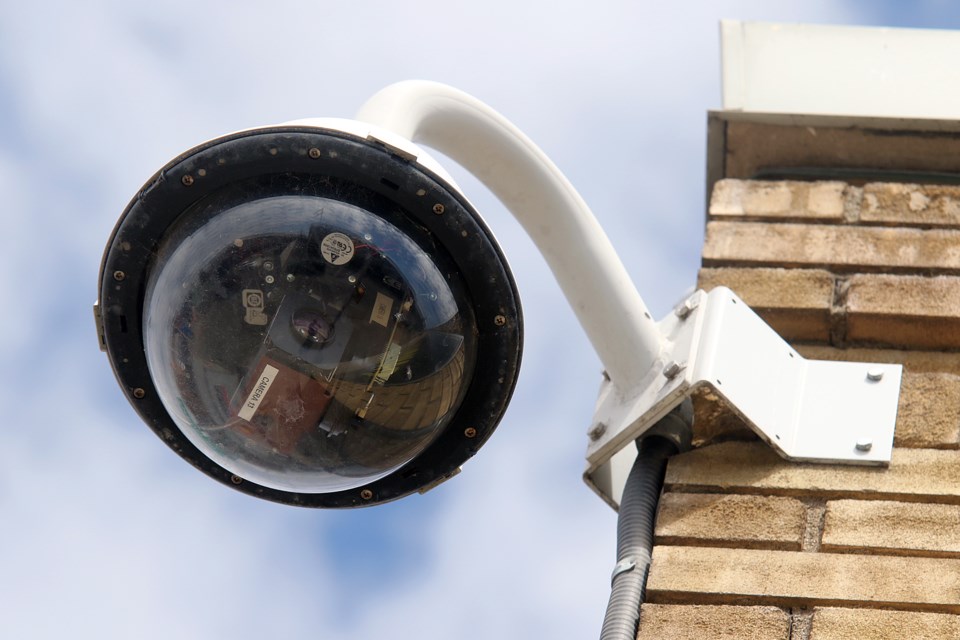THUNDER BAY — The public appears to be in favour of the Thunder Bay Police Service utilizing artificial intelligence for video analytics, but more steps need to be taken, including ensuring privacy protections are in place before the software is fully implemented.
“We saw from the public survey that there is definitely an interest by those who participated in all the issues that surround the use of artificial intelligence,” said Chris Adams, director of communications and technology with the Thunder Bay Police Service.
“It was a really good cross-section and we had a lot of intelligent and thoughtful remarks on both sides of the coin, those who were very concerned and others who are more in the majority who think it is a good investigative tool.”
The police service launched a public survey as part of a pilot project last month on the use the video analytics software, BriefCam, which utilizes artificial intelligence to process video footage.
The software allows video footage obtained through surveillance or the Eye on the Street program to be searched using specific characteristics, such as vehicle type or colour, clothing, direction of travel, and other identifiers.
A compressed timeline of the video is created showing when objects matching the identifiers appear, allowing for a much more streamlined and efficient way of searching through hours of video footage.
Adams said the technology can be used to assist in missing person, abduction, violent crime, property crime, and sudden death investigations.
“The service is dealing with thousands of hours of recorded video that has to be examined for specific cases,” Adams said during a presentation to the Thunder Bay Police Services Board on Tuesday. “It’s a great boon to investigators but the problem is it is fairly labour intensive given the amount of hours that have to be reviewed for our cases.”
Test cases using BriefCam included a sudden death investigation in early 2023 that collected 713 hours of video surveillance. BriefCam extracted approximately 2,796 objects from various video footage feeds and it was reviewed in its entirety by a single investigator in one shift.
As part of the pilot project, a public survey was issued to gather feedback on the use of the software, particularly its inclusion of artificial intelligence.
“There are concerns around AI and they have been well publicized over the years,” Adams said. “In our case, it is really listening to what those concerns are and addressing them and understanding which ones are applicable to this project we are talking about.”
According to the survey results, of the 512 respondents, 71 per cent said the use of video analytics by police is a good idea and 19 per cent said it was not.
The majority of respondents also strongly agreed that proper policies must be in place ensuring oversight of the use of video analytic software, especially when it comes to privacy.
The pilot project will remain ongoing until proper governance and policies are in place overseeing the use of video analytics.
Some of the recommendations presented to the police services board on Tuesday include BriefCam falling under the investigative service branch, that there be a retention period of data contained on the BriefCam server and that it be deleted after review, and that the facial recognition feature of BriefCam not be used at this time by the Thunder Bay Police Service.
“People understand artificial intelligence-based technology sometimes in this context has talk about the fear of using facial recognition and the invasion of privacy that creates,” Adams said.
“We have taken the very clear position that facial recognition is off the table. We are not interested in using it. We just want to use it as object recognition and a way of sorting all of that vast amount of video evidence the service is faced with.”
Adams added that further consultations are also needed with local Crown attorneys and other police services across the province who have utilized similar technology.
“We are going to continue the work we are doing which is developing proper training for anyone who is authorized to use the software, we are going to look at our draft internal policy and procedures for it, and we will continue the consultations we have begun both with the Crown attorney and other police services,” he said.
